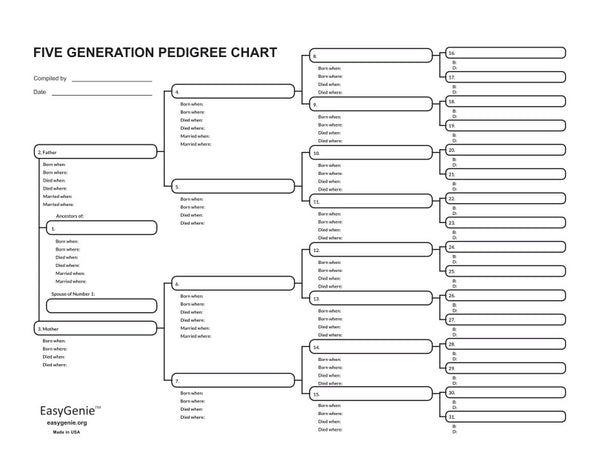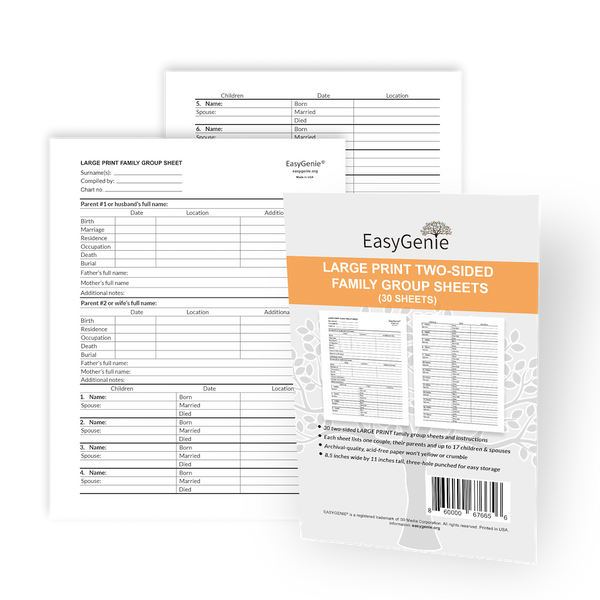
How to prepare a 6-generation genealogy PDF for framing
Ian LamontMany customers have framed EasyGenie charts to give as gifts, or to place on a living room wall or hallway. We’ve done it, too. The example below is a 9-generation fan chart that we showcase on our office wall and at events, such as the upcoming 36th International Congress of Genealogical and Heraldic Sciences in Boston:

Some years ago, I also commissioned a calligrapher to fill out a paper 6-generation chart of my father’s family. It looked stunning!
Now it’s mom’s family’s turn. This time, instead of hiring a calligrapher, I am using EasyGenie’s fillable 6-generation genealogy PDF that uses Aramis, a classy cursive-style font.
It’s basically a matter of copying and pasting data from my genealogy software into Adobe Acrobat, the free PC/Mac software that’s required for our fillable PDFs. When it’s done, I’ll take it to the local framing shop to be printed out at full size (17 x 22 inches) and properly framed.
But first, some keyboard edits are necessary. Check out this entry for a great-great-grandmother:
It looks kind of mechanical, doesn’t it? Indeed, this is how my genealogy software formats dates and locations, using computer-friendly standards rather than spoken language. So I changed it to this, and also added more context:

Noting the place of death (at home) and the cause (heart failure). These are small details, but important ones.
You may also notice that Mary’s chart number changed from 7 to 11. EasyGenie charts use the Ahnentafel system to number direct-line ancestors. #7 is always the maternal grandmother, but when I changed the root person at the bottom of the chart at position #1 from my grandfather to my mother, everyone shifted one generation to the right. #11 represents a maternal great-grandmother.

As I finish working on the chart, getting the language and details right is important to me. Decades from now, long after I’m gone, no one will dig up my old genealogy data file or access the WikiTree entries for these people that I uploaded in 2016. I doubt WikiTree - or, for that matter, Ancestry, 23andme, and a host of other genealogy sites - will still exist as we now know them.
But that handsome genealogy chart hanging on the wall? That’s something that’s likely to be handed down and treasured for many generations.








